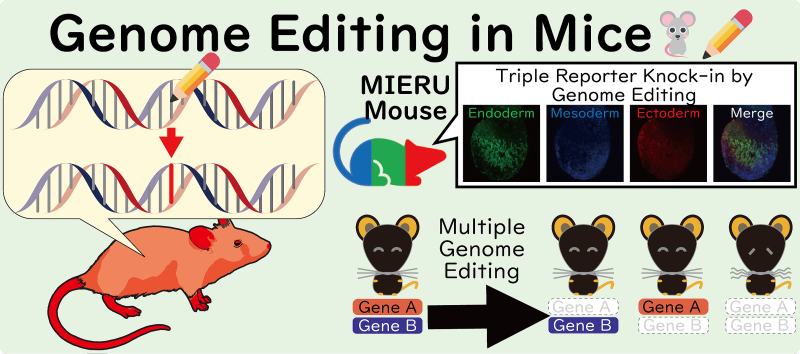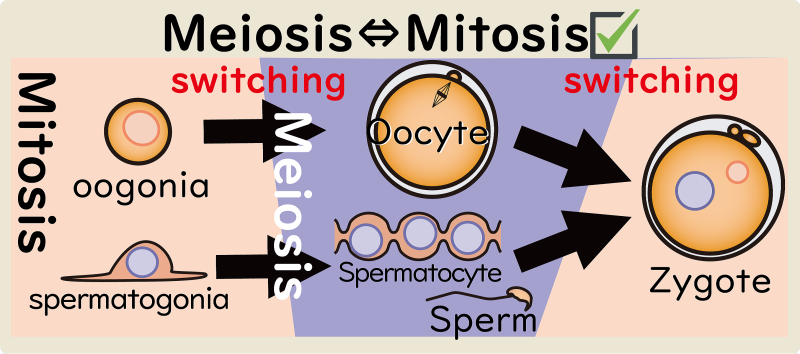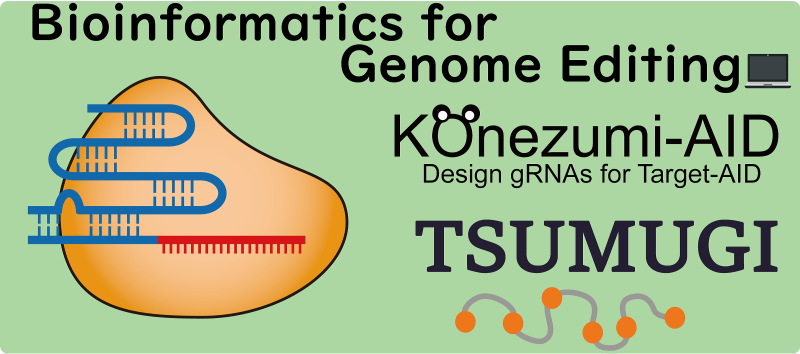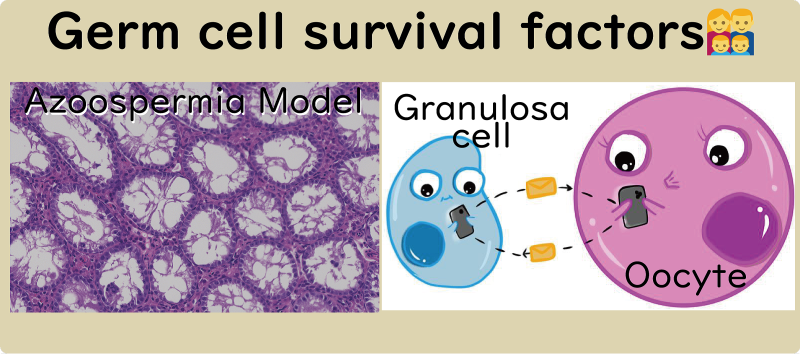TEL. 029-853-3393
Research
The following four reserach themes are currently in progress!

Genome Eding in Mouse models:
Genetically modified model animals are making a significant contribution to research on the molecular mechanisms of diseases and the analysis of gene function.
We are developing new in vivo genome editing methods and a large number of biological resources that are useful for medical and life science research.
Related Papers
[1]
[2]
[3]

Switching regulation between meiosis and mitosis:
Meiosis, which contributes to the expansion of genetic diversity, and mitosis, which ensures genetic stability, are both the most important fundamental events for maintaining life and preserving species.
We are studying the molecular basis of switching regulation between meiosis
and mitosis.
Related Paper
[1]
[2]

Bioinformatics for Genome Editing:
The advent of genome editing has made it possible to induce complex mutations and produce mice with parallel genetic modifications.
We are conducting bioinformatics research to process the large amount of information obtained in those ways and promote data-driven biological research.
Related Papers
[1]
[2]
[3]

Identification of germ cell survival factors:
The testes and ovaries contain many sperm and oocytes.
In order to identify the genes that stably produce and supply these germ cells, we are producing and analyzing mice in which only the germ cells have had the target gene deleted.
Related Paper
[1]
[2]
バナースペース
Laboratory Animal Science
〒305-8575
Tennodai 1-1-1,Tsukuba, Ibaraki,
Laboratory Animal Resource Center
B building, 2nd floor
TEL +81-29-853-3393